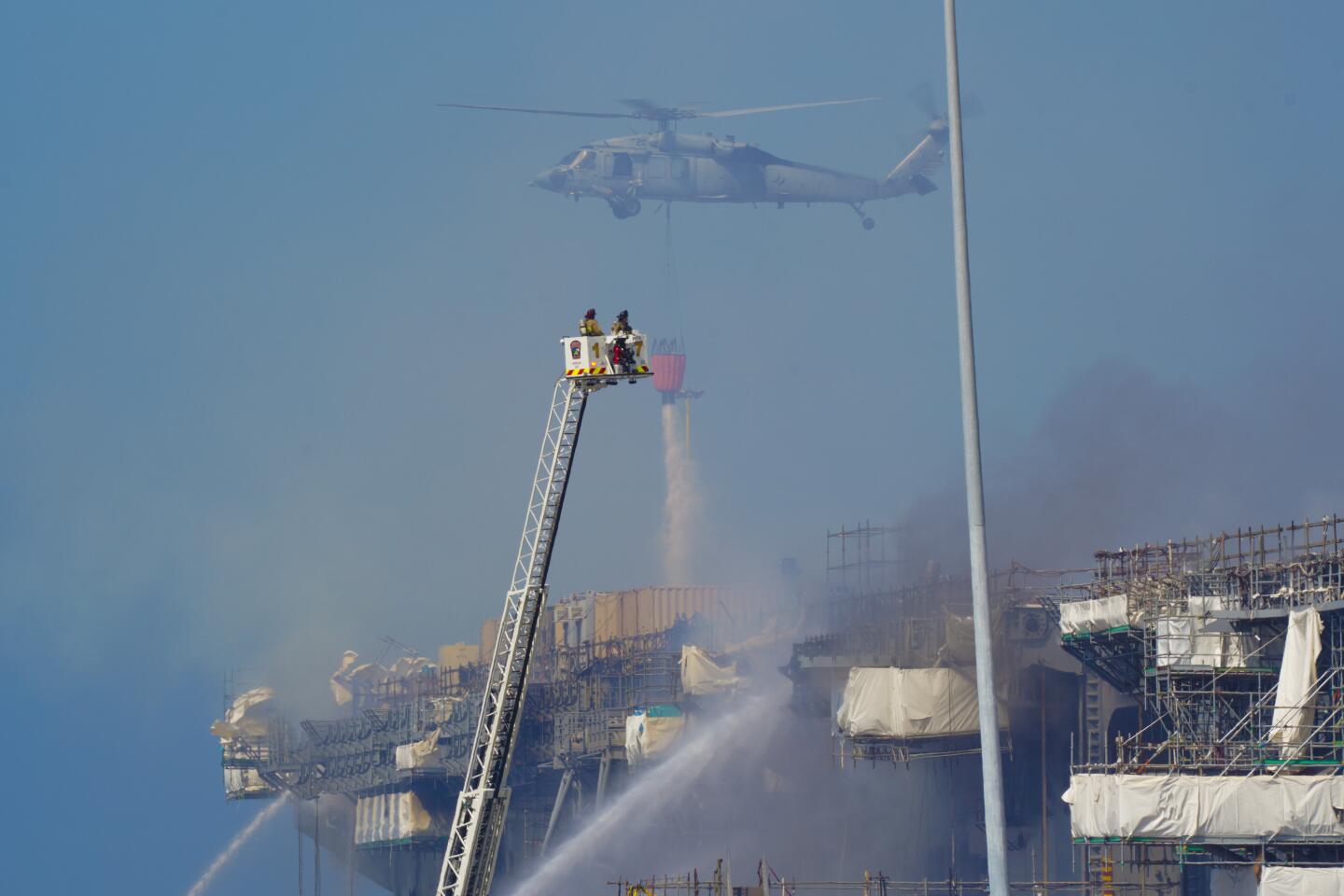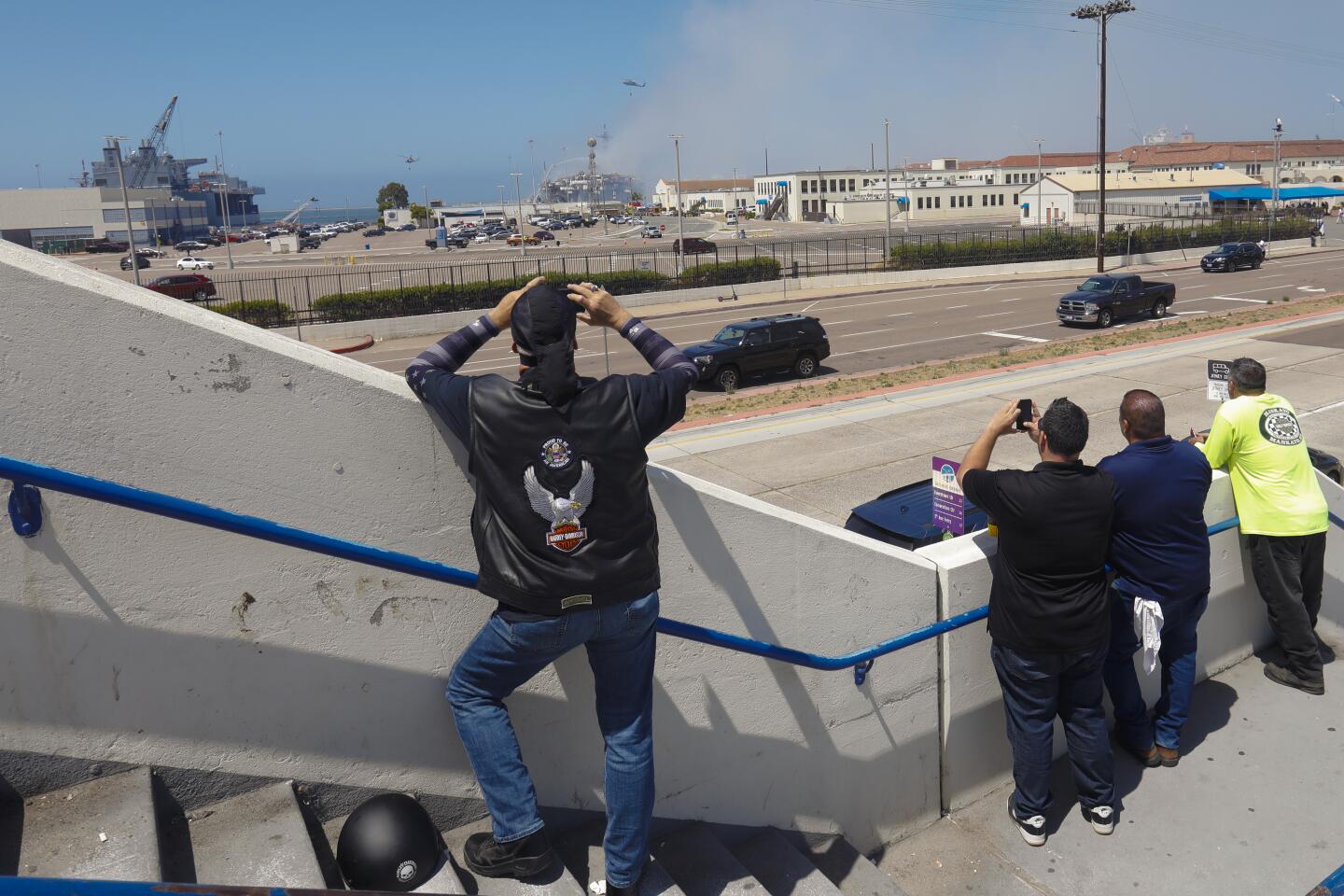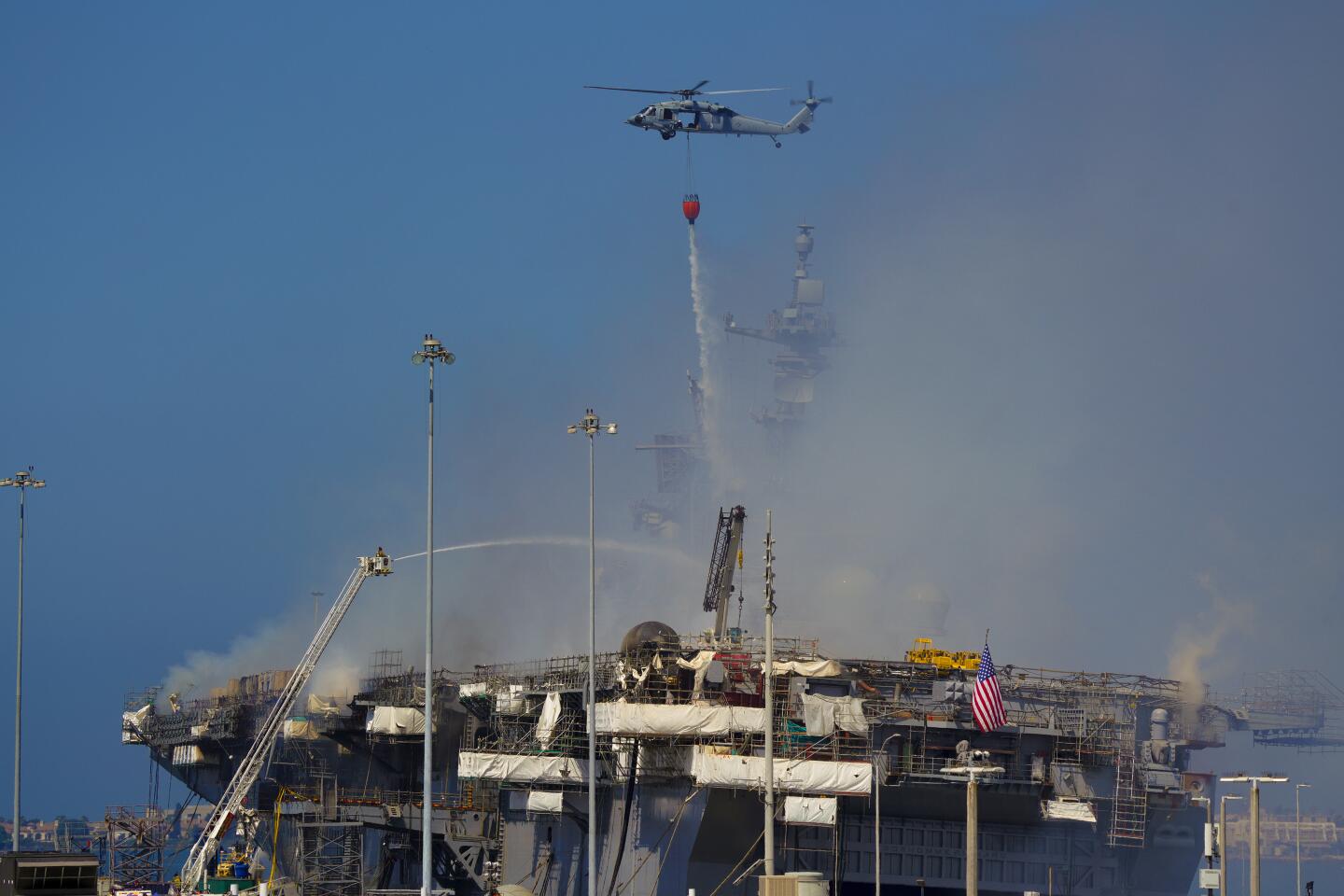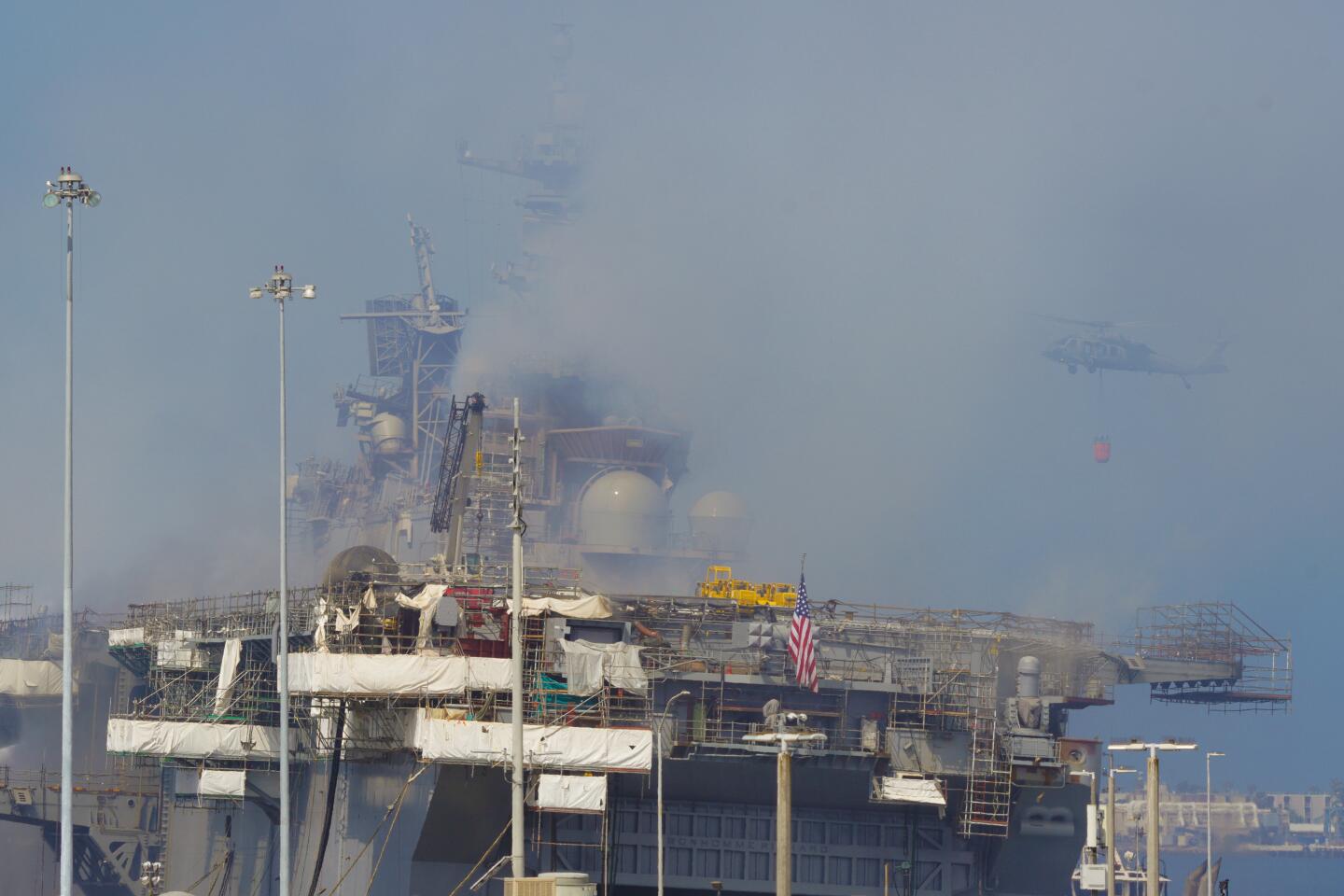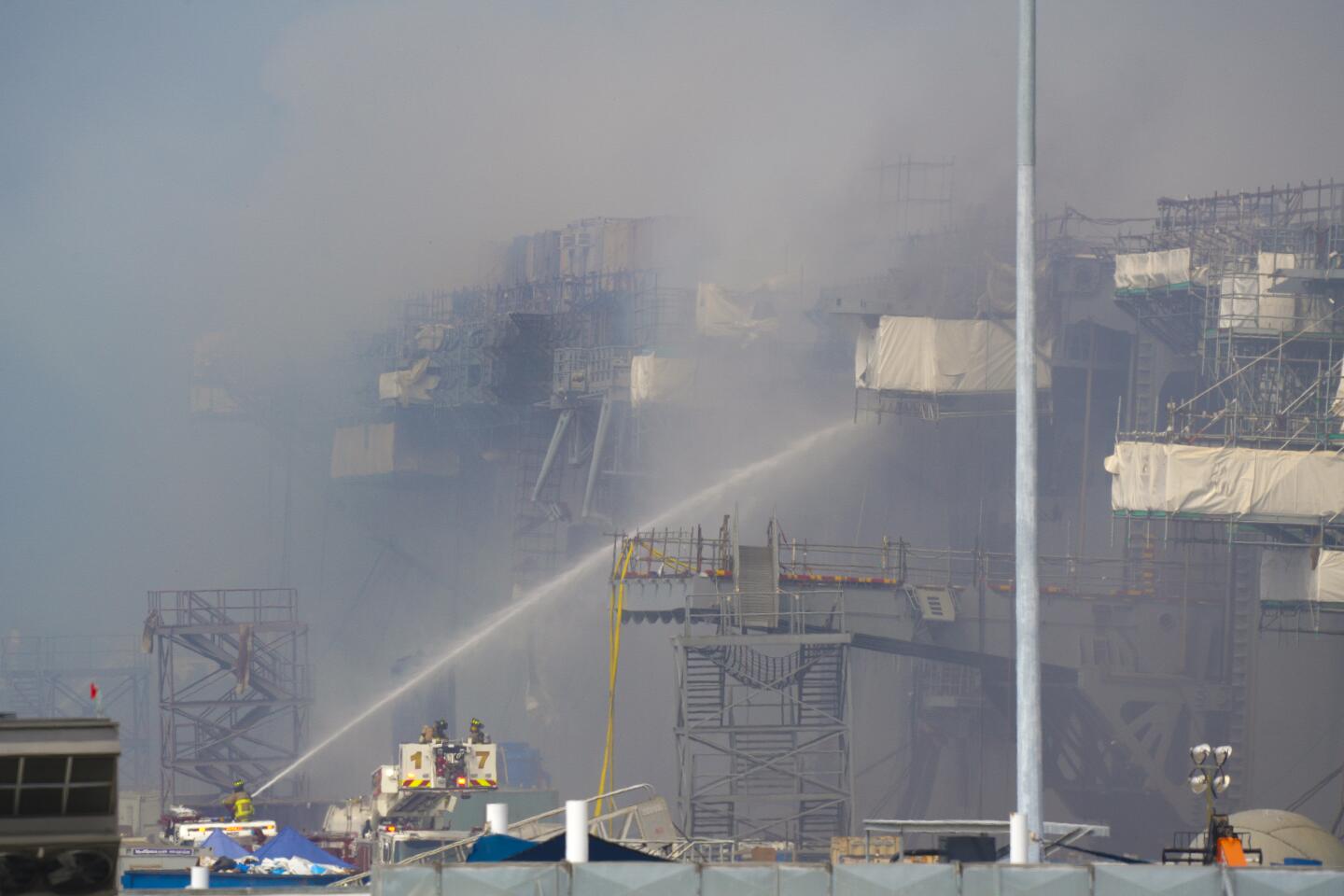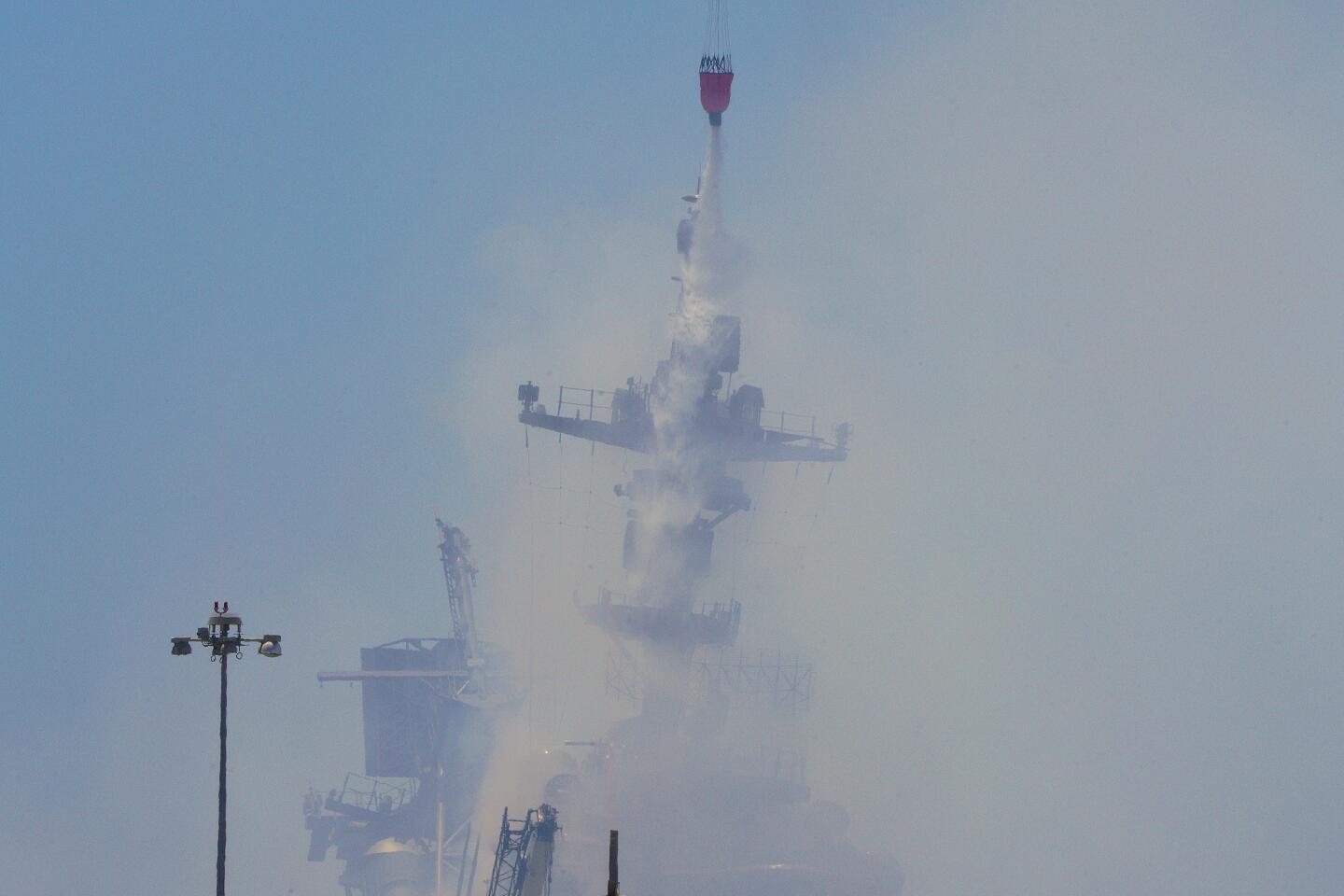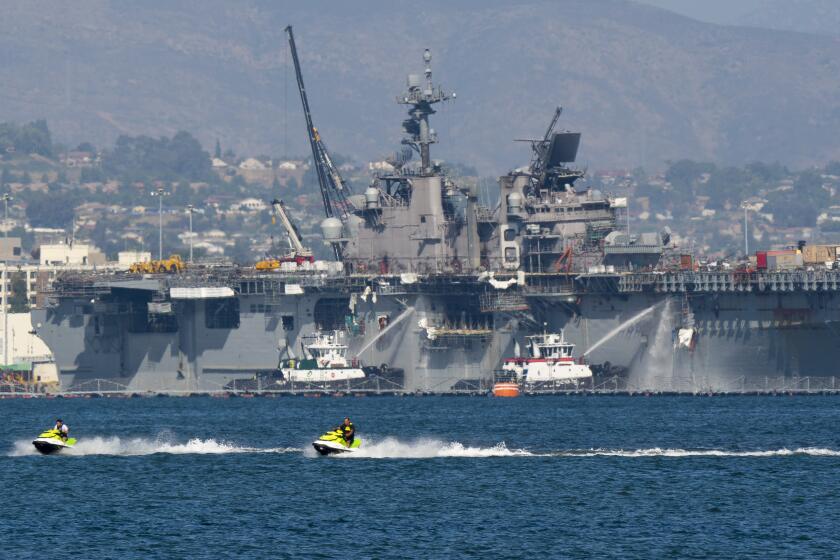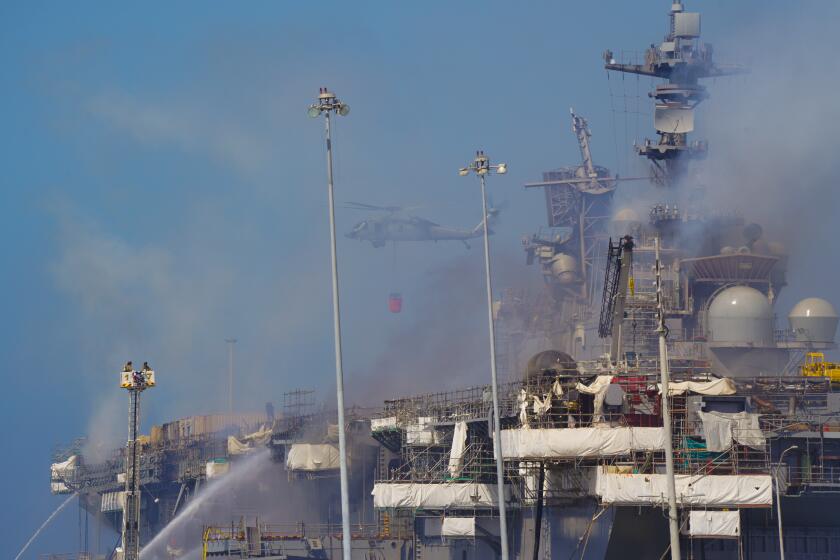Inferno on San Diego Navy ship rages into second day
- Share via
SAN DIEGO — U.S. Navy officials said Monday that the fire ravaging the amphibious assault ship Bonhomme Richard for a second day has reached temperatures as high as 1,000 degrees and is still burning in various portions of the ship.
Smoke and fumes continue to affect the skyline and air throughout San Diego.
Rear Adm. Philip Sobeck, the commander of Expeditionary Strike Group 3, said Monday morning that the fire is in the superstructure of the ship and its upper decks and that the forward mast has collapsed.
“There’s obviously burn damage all the way through the skin of the ship, and we are assessing that as we kind of go through each compartment,” he said. “Right now the priority is to get the fire out so that we can take a complete assessment.”
He said the flames are two decks away from the area in the ship where a million gallons of fuel is stored. He said that is “a concern,” but he’s confident the fire can be kept away from it.
About 400 sailors and fire crews from across the San Diego waterfront are fighting the blaze, and helicopters are conducting water drops. As of midday, Helicopter Sea Combat Squadron 3 had dumped 415 buckets on the ship, Sobeck said.
Water from the firefighting is causing the ship to list to one side, he said, but Navy personnel are working to pump the water off.
The cause of the fire remains unknown. Sobeck said it may have begun in a cargo area known as the deep-V storage area.
Sobeck said that although the ship was under maintenance, none of the work being done was in the storage area. And because of the work being conducted, the ship’s halon system, which emits a gas that starves a fire of oxygen, was not active, he said.
So far, 36 sailors and 23 civilians have been treated for injuries, mostly minor, related to firefighting. None were in the hospital as of the Navy’s latest update Monday afternoon.
Air quality remains a problem. Residents report smelling smoke from as far away as Vista, more than 40 miles. The skyline around the South Bay and Bonita area had a tinge of brown to it Monday morning.
Sobeck, who said plastics and the exteriors of cabling were burning, is urging people to take the precautions recommended by county air-quality officials. San Diego County and the National Weather Service recommended that people stay indoors with windows closed if they smell the fire.
The U.S. Coast Guard said it is preemptively deploying a protective boom in a 1-nautical-mile safety zone “to guard against any potential environmental concerns.” It also is restricting aircraft in the area up to 3,000 feet.
Area cities have tried to prepare for emergency situations on Navy ships, such as a fire. As recently as six months ago, Coronado, San Diego, Federal Firefighters and the Navy participated in a three-day joint training that included learning how to interact with multiple agencies and provide support, said Coronado Fire Chief Jim Lydon.
On Sunday, Coronado sent a battalion chief and a fire truck, he said, and provided help inside the ship.
Some observers on social media, including former sailors and Naval experts, have questioned whether the Navy will scuttle the ship, but Sobeck said Monday he believes the ship will ultimately be repaired.
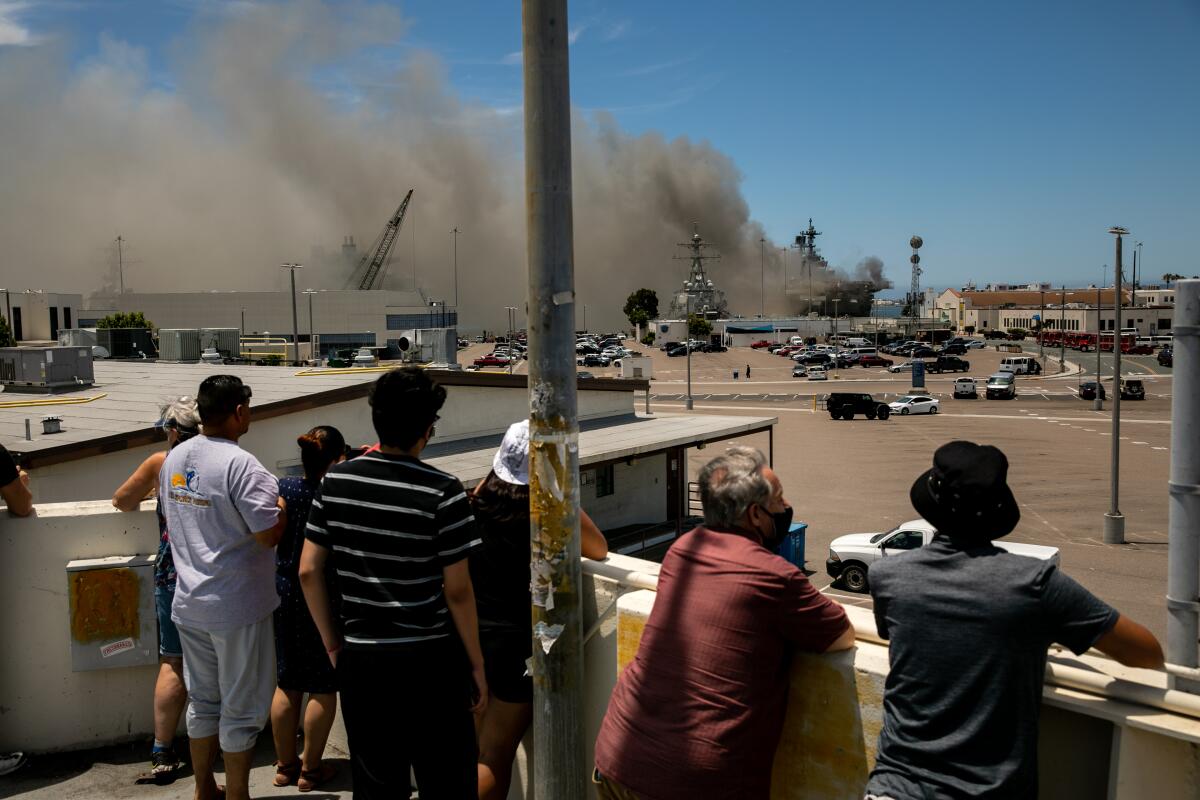
Amphibious assault ships are used to deploy Marines in amphibious landings. During operations, the ships conduct flight operations with helicopters and jet aircraft, such as the AV-8B Harrier and its replacement, the F-35 B Lightning. While deployed, these ships carry more than 2,000 sailors and Marines.
Sobeck said Sunday that all sailors are trained from boot camp to fight fires on ships.
This is one of the biggest fires on a Navy ship outside of combat. In 1967, a fire on the aircraft carrier USS Forrestal killed more than 130 sailors after a rocket accidentally fired on the flight deck and ignited several explosions. The episode has been used as a lesson on how to tackle safety procedures aboard Navy vessels.
The USS George Washington, a nuclear-powered aircraft carrier, caught fire in 2008 when oil was improperly stored on the craft. At least 37 sailors were injured in the fire, which took 12 hours to put out and cost $70 million in repairs.
Dyer writes for the San Diego Union-Tribune.
More to Read
Updates
6:00 p.m. July 13, 2020: This story was updated with information from the Navy’s morning press conference
8:48 p.m. July 13, 2020: This story was updated with information about the progress of firefighting efforts on the ship.
4:40 p.m. July 13, 2020: This story was updated with the latest numbers of injured personnel.
Sign up for Essential California
The most important California stories and recommendations in your inbox every morning.
You may occasionally receive promotional content from the Los Angeles Times.
